Research Article - (2025) Volume 17, Issue 1
Thyroid gland is one of the most important organ of endocrine system which releases two important hormones, Triiodothyronine (T3) and Thyroxine (T4). The production of both of these hormones is regulated by Thyroid Stimulating Hormone (TSH) produced by the pituitary gland in brain. Hypothyroidism is a condition that arises due to the deficiency of thyroid hormones as they control many important functions of the body and regulates metabolism. In contrast, hyperthyroidism is due to the overproduction of thyroid hormones causing hormonal imbalance. Furthermore, Goiter is another thyroid disorder characterized by the enlargement of thyroid gland. This cross-sectional study is based on data collected from different universities of Karachi, Pakistan with the targeted sample size of 500 respondents. The questionnaire was designed to focus on the awareness and knowledge of thyroid disorders for which the participants were selected randomly in each university. The data analysis shows that about 60.9% of the respondents have heard about a thyroid disorder in their friends and family, particularly individuals between 20-25 years of age. About 46.6% of the female respondents and 21.2% male respondents know about TSH, while 25.4% female and 12.1% male respondents know about T3 and T4. Percentages of respondents who are completely unaware of TSH and, T3 and T4, are higher among males at 78.8% and 87.9% respectively. About 65.6% of female respondents are aware of the effect of thyroid disorders on psychological behavior, while only 38.4% male respondents are aware of this fact. Moreover, 62.6% female respondents and 86.9% male respondents are unaware of the fact that iodine deficiency is also one of the major causes of thyroid disorders like Goiter. It is therefore concluded that lack of knowledge and awareness of thyroid disorders, is a major cause of delay in diagnosis which results in long term prevalence incurring lifetime treatment, and subsequently increase its rate of incidence.
Thyroid disorders • Hormones • Hormonal disorder • Survey
Thyroid disorders pose a significant health concern on a global scale, affecting individuals across diverse age groups and demographic backgrounds. While its prevalence has extensively been studied in various populations, data on the awareness as well as prevalence among university students in Pakistan remains insufficient. Hence, due to the level of awareness and prevalence of thyroid disorders and their long-term effects on human health, it is crucial to comprehend its prevalence and level of awareness among this specific targeted group.
The thyroid gland is a butterfly-shaped gland located in the neck that regulates many metabolic processes and physiological functions in the body [1]. It plays an integral role in regulation of multiple body functions like metabolism, growth, and development. According to previous studies, iodine deficiency, autoimmune diseases, inflammation, and medical operations like radiation or thyroid surgery can all contribute to the thyroid illness, while in some cases it may be hereditary. The most prevalent indications and symptoms of an underactive thyroid gland were fatigue, dry skin, weight gain or loss, changes in bowel movement and menstruation cycle, hair loss, abnormal metabolism and growth, and myalgia.
Hypothyroidism and hyperthyroidism are disorders, responsible for disrupting the delicate balance of thyroid hormones. This in turn leads to various physical as well as mental issues that often went unnoticed or undiagnosed, especially among young adults, which leads to prolonged health consequences. Hypothyroidism can contribute to morbidity for osteoporosis, hyperlipidemia, hypercholesterolemia, cardiovascular and neuropsychiatry disease. In contrast, hyperthyroidism is the increased secretion of thyroid hormones by the thyroid gland which includes Graves’ disease, thyroid cancer, solid hypersecreting nodules, and toxic multinodular goiters [2]. The signs and symptoms are primarily determined by the type of thyroid (hypothyroidism or hyperthyroidism or thyroid nodules) and can alter multiple physiological functions in the body including metabolism. Further, thyroid diseases are often neglected and misunderstood for other medical conditions due to the occurrence of non-specific symptoms [3]. Thyroid hormone regulates a wide range of genes after its activation from the prohormone, Thyroxine (T4), to the active form, Triiodothyronine (T3) [4]. Thyroid Stimulating Hormone (TSH), secreted by the anterior pituitary in response to feedback from circulating thyroid hormone, acts directly on the TSH Receptor (TSH-R) [5]. TSH regulates iodide uptake mediated by the sodium/iodide symporter, followed by a series of steps necessary for normal thyroid hormone synthesis and secretion. In mammals, thyroid hormone is essential for normal development, growth, neural differentiation, as well as for metabolic regulation.
Since university life is the crucial phase of an individual’s life as they undergo significant physical, emotional, and lifestyle changes, therefore, factors like academic stress, irregular eating habits, sleep disturbances, and environmental exposures can all contribute to the development or exacerbation of thyroid disorders. In addition, lack of awareness and insufficient knowledge of the signs and symptoms of thyroid disorders among youngsters is the cause of late diagnosis of the disease which leads to the lifetime dependency of thyroid hormones intake. Hence, this research aims to investigate the awareness about thyroid disorders among university students in Pakistan to fill the gap by collecting a demographic data based on the knowledge of the university individuals.
Research design
Poor knowledge of the thyroid is more common and is reported in many studies internationally. The aim of this study is to use a quantitative approach to examine the awareness of thyroid disorders among university students in Pakistan. In order to collect data at a specific point in time, the cross-sectional approach was employed so that a more comprehensive response could be collected from the target audience including three demographic parameters such as, age, gender and educational categories.
Sampling strategy
The questionnaire was prepared after an extensive literature review using previously published similar studies. In order to ensure diversities in target universities and academic disciplines, a multistage sampling technique was utilized. Firstly, a list of universities was prepared, and within each selected university, participants were chosen at random from various academic programs. The sample size was set to be 500.
Data collection
Data was collected using a structured questionnaire that was prepared specifically for this study. The questionnaire focused on 18 questions targeting awareness of thyroid disorders. All questions were aimed at general awareness of thyroid and thyroid disorders. The questionnaire was administered in person and was completed in two months. In the selected universities, the number of participants who were given the questionnaire to gather responses was not constant and all participants were chosen at random. To ensure confidentiality and anonymity of all participants and to keep their personal information secure, the study adhered to ethical guidelines and regulations throughout the research process.
In recent years people have become more aware towards the rise in the prevalence of metabolic diseases [6]. In Pakistan and other international countries, in particular, the incidence of obesity, thyroid disease, and diabetes is rising [7,8]. These conditions are strongly linked to a variety of co morbidities, which in turn boost the death and disability rates around the globe. The knowledge and attitudes of people concerning thyroid illness are not well documented on a national and worldwide level, although majority of the studies has been found in nations such as Saudi Arabia and India [9,10]. Therefore, the present study makes a substantial addition to the understanding of potential contributing variables to thyroid prevalence among Pakistan's young population. Moreover, it will operate as a baseline for subsequent research that will focus on developing targeted treatments and strategies to lower the risk of predisposing variables or assist in the management of illnesses to promote a healthy lifestyle.
Demographic data
In convenient sampling, we received data of 500 participants comprising of 80 % females and reaming 20% male respondent in our study (Figures 1 and 2).
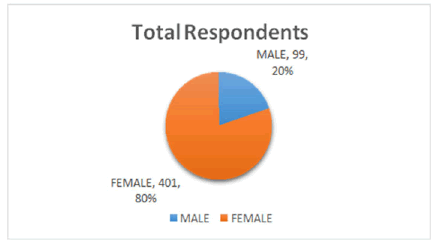
Figure 1. Graphical representation of total number of respondents based on gender distribution.
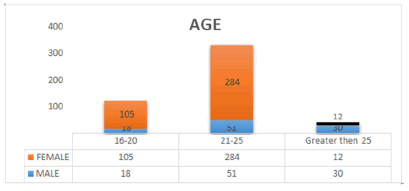
Figure 2. Graphical representation of total no. of respondents based on gender and age distribution.
Age and gender wise data distribution: It was demonstrated that the males in the 26-30 age group showed the highest percentage at 76.9%. This suggests that the male population in mid-twenties is more aware of thyroid disease than males in other age groups. This may be because, men in this age group are more likely to have symptoms of thyroid disease, such as fatigue, weight gain, and hair loss, and consequently seek medical attention for these symptoms. The percentage of males in the other age groups is lower, with the lowest percentage being ‘greater than 35’ age group, at 0.0%. It is suggested that men in this age group may be less likely to have symptoms of thyroid disease and are more likely to be less educated about thyroid disease (Table 1).
| Age groups | |||||
|---|---|---|---|---|---|
| Gender’s | 16-20 | 21-25 | 26-30 | 31-35 | Greater than 35 |
| Male | 18 (14.6%) | 51 (15.2%) | 30 (76.9%) | 0 (0.0%) | 0 (0.0%) |
| Female | 105 (85.4%) | 284 (84.8%) | 9 (23.1%) | 1 (100.0%) | 2 (100.0%) |
| Total | 123 (100.0%) | 335 (100.0%) | 39 (100.0%) | 1 (100.0%) | 2 (100.0%) |
Table 1. Data analysis showing age and gender wise distribution.
However, the percentage of females ranging from in all age groups is higher 85.4% to 100% than the percentage of males that ranges from 14%to 76%. This suggests that women are more aware of thyroid disease than men as women are more prone towards thyroid disorders or hormonal diseases. In addition, women are more likely to see a doctor for their health concerns and therefore, are more likely to be aware of thyroid disease. More research is needed to understand the reasons for the gender differences in thyroid awareness (Table 2 and Figure 3).
| Education level | Final year | 3rd year | 2nd year | 1st year |
|---|---|---|---|---|
| Total gender frequencies (%) | 206 (41.5%) | 131 (26.4%) | 110 (22.17%) | 49 (9.8%) |
Table 2. Data analysis showing education wise data distribution.
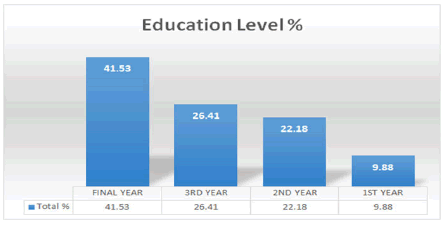
Figure 3. Graphical representation of education wise data distribution.
Education wise data distribution: Based on the analysis a trend was observed related to awareness of thyroid disorders. It was observed that as the education progresses, awareness increases. Likewise, at the graduation level (final year) 41.5% students were well aware of the thyroid disorders compared to under graduates (3rd year, 2nd year and 1st year) comprising of 26.4%, 22.17% and 9.8% respectively of the total aware population. In addition, based on the gender based demographic data it is also suggested that the percentage of awareness in females remains consistently high as students’ progress through their education in this field. However, data acquired at post-graduate level was not sufficient enough to produce comparable statistical data.
Overall, the demographic data suggests that awareness of thyroid disease is higher in women than in men, and that this trend persists as students’ progress further in their education. This is important because thyroid disease is a common condition that can have a significant impact on a person's health. Moreover, it was also observed that the students enrolled in public universities are more aware of the thyroid related disorders and responded actively compared to the students in private universities (Table 3 and Figure 4).
| Names of universities | Frequencies (%) |
|---|---|
| Dow University of Health Sciences (DUHS) | 71 (14.2%) |
| Federal Urdu University of Arts, Science and Technology (FUAST) | 9 (1.8%) |
| IQRA University | 47 (9.4%) |
| Jinnah University for Women | 48 (9.6%) |
| Karachi Medical and Dental College (KMDC) | 20 (4.0%) |
| University of Karachi (KU) | 199 (39.8%) |
| Mohammad Ali Jinnah University (MAJU) | 40 (8.0%) |
| NED University of Engineering and Technology | 46 (9.2%) |
| Sir Syed University of Engineering and Technology | 1 (0.2%) |
| Sindh Muslim Government Law College (SM) | 18 (3.6%) |
| Shaheed Zulfiqar Ali Bhutto Institute of Science and Technology (SZABIST) | 1 (0.2%) |
| Total | 500 (100.0%) |
Table 3. Data analysis showing university based data distribution.
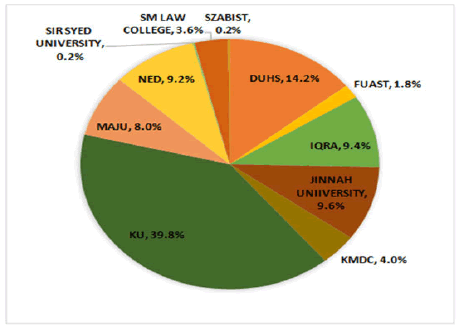
Figure 4. Graphical representation of university wise data distribution.
Awareness on thyroid disorders
The data analysis shows that 86.0% of the total respondents is comprised of a vast majority of female respondents who have a basic idea of hormones and thyroid glands. About 60.9% of the respondents have heard about a thyroid disorder in their friends and family particularly students between 20-25 years of age. This estimation indirectly shows that a large number of population is suffering from a thyroid disorder.
The data further shows that about 46.6% of the female respondents and 21.2% male respondents know about TSH, while 25.4% female and 12.1% male respondents know about T3 and T4. Majority of respondents who are aware of all three hormones are associated with the same age group between 20-25 years. Percentages of respondents who are completely unaware of TSH and, T3 and T4, are higher among males at 78.8% and 87.9% respectively which shows that majority of the sample population is unaware of thyroid hormones. In general, the data shows a greater percentage of awareness in overall female respondents, with 59.4% of female respondents being aware of hyperthyroidism, 55.4% respondents being aware of hypothyroidism, 62.3% being aware of Goiter, and only 25.4% being aware of Grave’s disease. In contrast, among male respondents, only 25.3% know about hyperthyroidism, 26.3% respondents about hypothyroidism, 30.3% respondents about goiter, and only 6.1% respondents know about Grave’s disease. Based on this statistical data, it is observed that roughly 50% of the population is aware of thyroid disorders, particularly women, as only 25-30% of the overall male respondent population showed awareness of thyroid disorders. However, in broader perspective, the data statistically supports the claim that the general public lacks adequate awareness of thyroid hormones and related diseases, which also corresponds with data reported in various related international studies [11,12]. This is a reflection on the asymptomatic nature and progress of the disease, specifically hypothyroidism and hyperthyroidism that even though are highly prevalent, yet do not exhibit any visible symptoms. Serious difficulties, however, may develop in both males and females if this illness is not addressed [13]. Additionally, it is also found that 64.3% of female respondents and 38.4% male respondents have knowledge of hormonal diseases like diabetes, which indicates inadequate knowledge of diabetes as well, corresponding to previous study conducted in Pakistan despite its high prevalence [14,15].
The data also shows that about 10% of the female respondents and just 1.0% male respondents were prescribed diagnostic test of thyroid hormones, specifically TSH, in response to abnormal physiological condition. However, it’s a possibility that majority of the remaining percentage of respondents didn’t consider consulting a doctor, and rather preferred self-medication. About 65.6% of female respondents are aware of the effect of thyroid disorders on psychological behavior, while among male respondents only 38.4% have this awareness, and the age group with most aware respondents is above 30 years. This result indirectly provides evidence that majority of females are afflicted with some sort of hormonal imbalance, which may eventually lead to hormonal disorder, as well as neurological manifestation as reported in various studies [16,17].
The data analysis also shows that 62.6% female respondents and 86.9% male respondents are unaware of the fact that iodine deficiency is a major cause of thyroid disorder, subsequently being one of the leading causes of high incidence rate of thyroid disorders as reported in previous studies [18]. Furthermore, 68.3.6% of the female students and 38.4% of the male students were aware of the fact that iodine deficiency is also a major cause of Goiter. About 33.2% of female respondents and 19.2% of male respondents are aware of the fact that stress and depression is the major cause of thyroid disorders [19].
Regarding general awareness of thyroid disorders, 59.4% of the respondents have heard about hyperthyroidism and 55.4% of the respondents have heard about hypothyroidism but the data shows that only 29.7% of the population, majorly comprised of master’s students of age 21-25 years, is aware of their symptoms as well. It was also found that about 59.1% of the female respondents know about Goiter and its symptoms, and 68.3% of the population were able to identify iodine deficiency as the major cause of Goiter. Hence, it can be concluded that the general population has more awareness of Goiter, compared to that of hypo and hyperthyroidism. This awareness can be attributed to the visible physiological manifestation of Goiter, in the form of enlarged thyroid gland (swelling in neck). The data, hence, correlates with the epidemiological prevalence of Goiter found to be higher than other thyroid disorders, especially in populations indigenous to areas attributed with iodine deficiency in diet, as reported in recent study (Figure 5 and Table 4) [20].
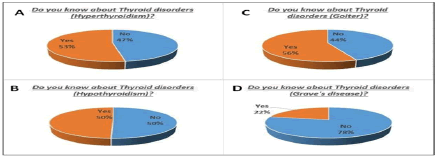
Figure 5. Graphical representation thyroid disorders awareness based on gender distribution. (A): Hyperthyroidism; (B): Hypothyroidism; (C): Goiter and (D): Grave’s disease.
| Questions/gender categories | Responds | Female frequencies (%) | Male frequencies (%) | *Chi-square (0.05*) |
|---|---|---|---|---|
| Do you have any idea about hormones? | No | 56 (14.0%) | 40 (40.4%) | .000* |
| Yes | 345 (86.0%) | 59 (59.6%) | ||
| Do you know anything about thyroid gland? | No | 58 (14.5%) | 45 (45.5%) | .000* |
| Yes | 343 (85.5%) | 54 (54.5%) | ||
| Do you know about thyroid disorders (Hyperthyroidism)? | No | 163 (40.6%) | 74 (74.7%) | .000* |
| Yes | 238 (59.4%) | 25 (25.3%) | ||
| Do you know about thyroid disorders (Hypothyroidism)? | No | 179 (44.6%) | 73 (73.7%) | .000* |
| Yes | 222 (55.4%) | 26 (26.3%) | ||
| Do you know about thyroid disorders (Goiter)? | No | 151 (37.7%) | 69 (69.7%) | .000* |
| Yes | 250 (62.3%) | 30 (30.3%) | ||
| Do you know about thyroid disorders (Grave's disease)? | No | 299 (74.6%) | 93 (93.9%) | .000* |
| Yes | 102 (25.4%) | 6 (6.1%) | ||
| Do you know what TSH? | No | 214 (53.4%) | 78 (78.8%) | .000* |
| Yes | 187 (46.6%) | 21 (21.2%) | ||
| Do you know what T3? | No | 299 (74.6%) | 87 (87.9%) | .005* |
| Yes | 102 (25.4%) | 12 (12.1%) | ||
| Do you know what T4? | No | 299 (74.6%) | 87 (87.9%) | .005* |
| Yes | 102 (25.4%) | 12 (12.1%) | ||
| Due to any unwell physiological condition ever, the Dr. suggested thyroid profile diagnostic test? | No | 361 (90.0%) | 98 (99.0%) | .004* |
| Yes | 40 (10.0%) | 1 (1.0%) | ||
| Do you have any idea about other hormonal diseases, like diabetes or any other? | No | 143 (35.7%) | 61 (61.6%) | .000* |
| Yes | 258 (64.3%) | 38 (38.4%) | ||
| Have you ever had interact with a person suffering from any thyroid disease? | No | 232 (57.9%) | 73 (73.7%) | .004* |
| Yes | 169 (42.1%) | 26 (26.3%) | ||
| Do you know that thyroid diseases have major affects on your psychological behavior? | No | 138 (34.4%) | 61 (61.6%) | .000* |
| Yes | 263 (65.6%) | 38 (38.4%) | ||
| Do you have any idea about the major causes of thyroid disorders? (Stress/depression) | No | 324 (80.8%) | 89 (89.9%) | .032* |
| Yes | 77 (19.2%) | 10 (10.1%) | ||
| Do you have any idea about the major causes of thyroid disorders? (Iodine deficiency) | No | 251 (62.6%) | 86 (86.9%) | .000* |
| Yes | 150 (37.4%) | 13 (13.1%) | ||
| Do you know/heard about hyperthyroidism (Its symptoms)? | No | 282 (70.3%) | 87 (87.9%) | .000* |
| Yes | 119 (29.7%) | 12 (12.1%) | ||
| Do you know/heard about hypothyroidism (Its symptoms)? | No | 282 (70.3%) | 87 (87.9%) | .000* |
| Yes | 119 (29.7%) | 12 (12.1%) | ||
| Do you know that the major cause of hypothyroidism and hyperthyroidism is depression or stress? | No | 268 (66.8%) | 80 (80.8%) | .007* |
| Yes | 133 (33.2%) | 19 (19.2%) | ||
| Do you know about goiter and its symptoms? | No | 164 (40.9%) | 65 (65.7%) | .000* |
| Yes | 237 (59.1%) | 34 (34.3%) | ||
| Do you know that iodine deficiency can cause thyroid disease like goiter? | No | 127 (31.7%) | 61 (61.6%) | .000* |
| Yes | 274 (68.3%) | 38 (38.4%) | ||
| Do you know that unhealthy food/diet is a major cause of hormones disturbance in body and cause major hormonal diseases like thyroid diseases? | No | 127 (31.7%) | 56 (56.6%) | .000* |
| Yes | 274 (68.3%) | 43 (43.4%) |
Table 4. Data analysis showing percentages of all the responses based on gender categories elated to general awareness on thyroid disorders.
The results of statistical analysis of general awareness show that majority of the respondents, particularly females belonging to the age group of 21-25 years have the basic idea of hormones and thyroid gland but are not aware of thyroid hormones and related disorders, with the exception of goiter disease of which about 62.3% are aware. Majority of respondents have heard about thyroid disorders in their family and friends, but only 42.1% female respondents and 26.3% male respondents have personally interacted with thyroid patients This widespread basic awareness of thyroid disease indirectly infers a high prevalence of thyroid disorders, with a possibility that some of them may not be diagnosed with a thyroid disease, and may rather have other subclinical thyroid symptoms or hormonal disturbances due to intake of unhealthy diet, deficiency of important nutrients or because of the continuous or chronic stress and depression. The results also give evidence that majority of the people do know about hyperthyroidism and hypothyroidism but have no knowledge of their elementary symptoms that are an important aspect of awareness regarding the epidemiology of disease and the rate of its prevalence. As a result, most thyroid disorders are not timely diagnosed which then results in long term manifestation of the disease, and consequently dependence on life time drug treatment regiments.
[Crossref] [Google Scholar] [PubMed]
[Crossref] [Google Scholar] [PubMed]
[Crossref] [Google Scholar] [PubMed]
[Crossref] [Google Scholar] [PubMed]
[Crossref] [Google Scholar] [PubMed]
[Crossref] [Google Scholar] [PubMed]
[Crossref] [Google Scholar] [PubMed]
[Crossref] [Google Scholar] [PubMed]
[Crossref] [Google Scholar] [PubMed]
[Crossref] [Google Scholar] [PubMed]
[Crossref] [Google Scholar] [PubMed]
[Crossref] [Google Scholar] [PubMed]
[Crossref] [Google Scholar] [PubMed]
[Crossref] [Google Scholar] [PubMed]
[Crossref] [Google Scholar] [PubMed]
Citation: Aslam M, et al. "Awareness of Thyroid Disorders among Undergrad Students in Pakistan: A Cross Sectional Survey Based Analysis". Int J Collab Res Intern Med Public Health, 2025, 17(1), 1-6.
Received: 23-Dec-2023, Manuscript No. IJCRIMPH-24-123374; Editor assigned: 27-Dec-2023, Pre QC No. IJCRIMPH-24-123374 (PQ); Reviewed: 10-Jan-2024, QC No. IJCRIMPH-24-123374; Revised: 12-Feb-2025, Manuscript No. IJCRIMPH-24-123374 (R); Published: 19-Feb-2025, DOI: 10.35248/1840-4529.25.17(1).001
Copyright: © 2025 Aslam M, et al. This is an open-access article distributed under the terms of the Creative Commons Attribution License, which permits unrestricted use, distribution, and reproduction in any medium, provided the original author and source are credited.